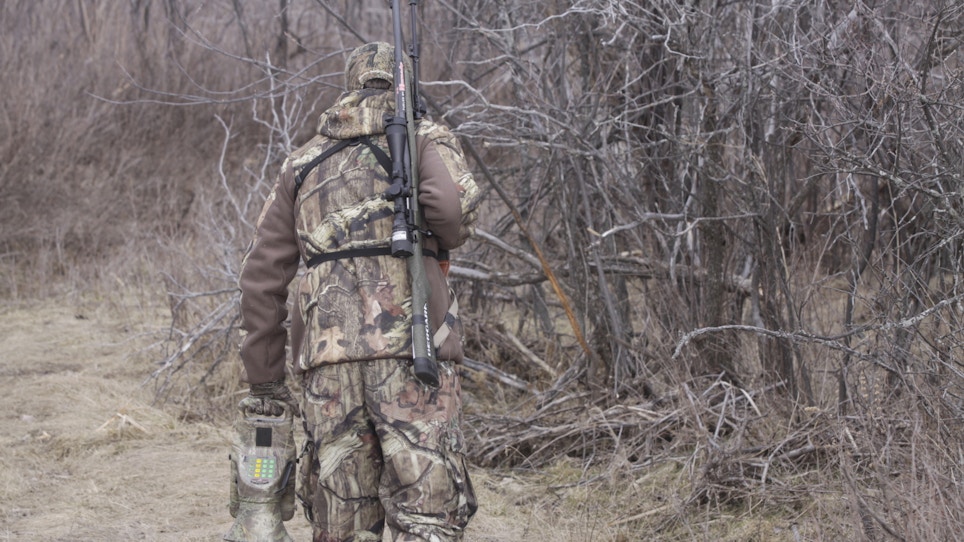You were taught to use rabbit-in-distress sounds to call in coyotes. You were taught that you should wait 15 minutes and then move to another site if unsuccessful. You were also taught to hunker down and never move when calling coyotes. Electronic callers today give you freedom to use more sounds than ever. You probably still get impatient after 15 minutes and take off soon afterward. But have you tried moving while utilizing coyote vocalizations to replicate the realism of a coyote on the move as it investigates other coyote invaders?
This tactic doesn’t work in all environments. If you hunt vast, open-country basins, rolling wheat fields or even big mesas with desert vegetation, making the move could leave you as exposed as a nude beachgoer. Luckily, much of the country has ample terrain to cover your moves, especially when you consider the possibilities to move on stubborn coyotes inhabiting real estate east of the Mississippi.
Matt Piippo, the head pro staff manager for Les Johnson’s Predator Quest, has been pursuing coyotes with passion for more than a dozen years. Piippo is always scheming and constructing new strategies for pressured coyotes. He understands that with the added interest in the sport comes added pressure.
Coyotes he used to be able to call with the sounds of a distressed rabbit now ignore it. His go-to approach today heavily utilizes coyote vocalizations and he believes it’s one of the few sounds coyotes still feel safe approaching. But even that sound has been exploited by new predator hunters so Piippo has added in another element to ensure success while employing vocalizations. In addition to his use of vocalizations and combining that with longer waits while calling, Piippo adds movement into his setups.
“I’ve changed my approach lots of way,” explains Piippo. “I even move when using coyote vocalizations to incite realism.”
Piippo readily admits all terrain doesn’t allow that flexibility, but when he begins conversing with a coyote and it stays in a stationary position he’ll consider a move. This mimics reality. As territorial animals, coyotes are constantly monitoring home territory for adolescent invasions and the occasional coyote nomad. Of course coyotes during breeding season investigate howls and challenges for potential suitors, or date robbers. As they move toward another coyote they may remain silent, but oftentimes they’ll emit howls to track the location of the other coyote.
A stalled coyote could be spurred back into action if you can make a move on it as Piippo suggests. Staying downwind and staying out of sight are imperative. Check the wind and use any and all terrain and vegetation as a screen. Once you move and have a good vantage point you can once again engage in vocalizing. It may take two or more moves to pique a parked coyote’s interest, but being aggressive could spell the difference between failure and success.
Piippo sums it up well: “If you are not creative in your approach you are not getting as many coyotes as you could be.”






